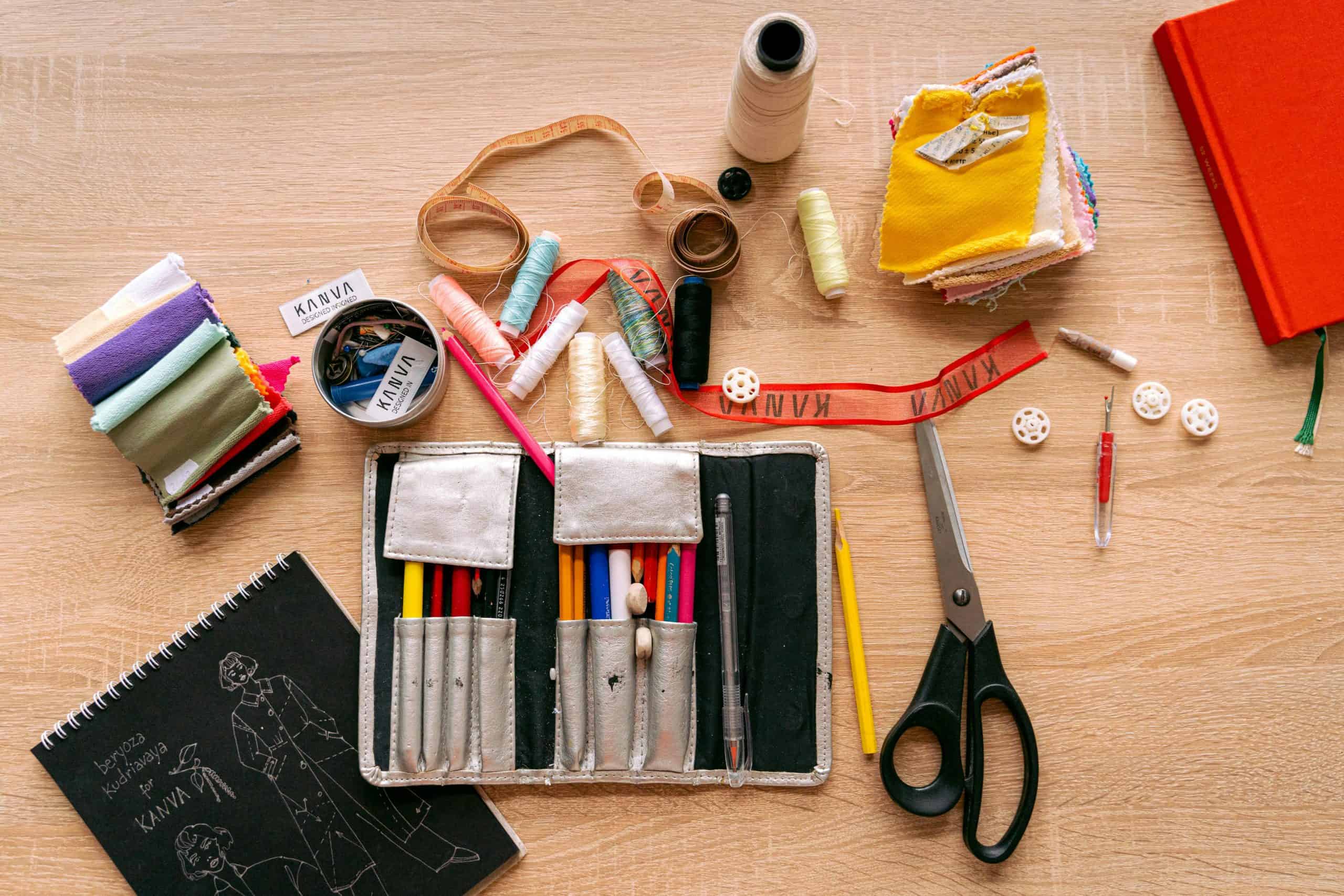Getting into sewing can be confusing at first. There’s a lot of stuff out there, and it’s easy to think you need all of it. But the truth is, you only need a few basic tools to get started.
This list covers the essentials. These are the tools that actually help when you’re learning – tools that make things easier, not more complicated. No extras, no pressure to buy every gadget you see. Just simple, reliable items that you’ll keep reaching for as you sew.
Start with these, and add more only if and when you need them. This is a solid foundation to help you build skills and get comfortable with sewing.
1. Heavy Duty Singer Sewing Machine
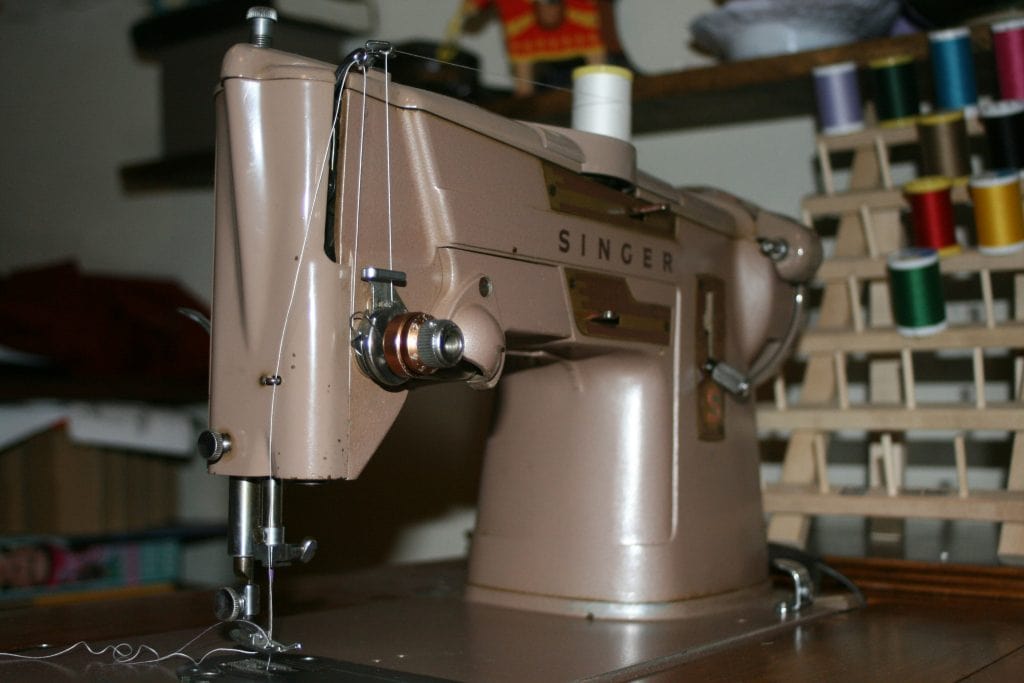
This machine is one of the best picks for beginners. It’s not the cheapest option out there, but it’s also not wildly expensive – just a good, solid middle ground.
It can handle thicker fabrics like denim or canvas, and it’s sturdy enough to grow with you as your projects get more ambitious. I’ve put mine through a lot, and it’s held up beautifully.
One thing I always recommend: take your sewing machine to a local sewing shop for a tune-up once a year (kind of like a little check-up). It keeps everything running smoothly and helps catch small issues before they turn into big headaches. A well-maintained machine makes sewing so much more enjoyable.
2. Serger Machine
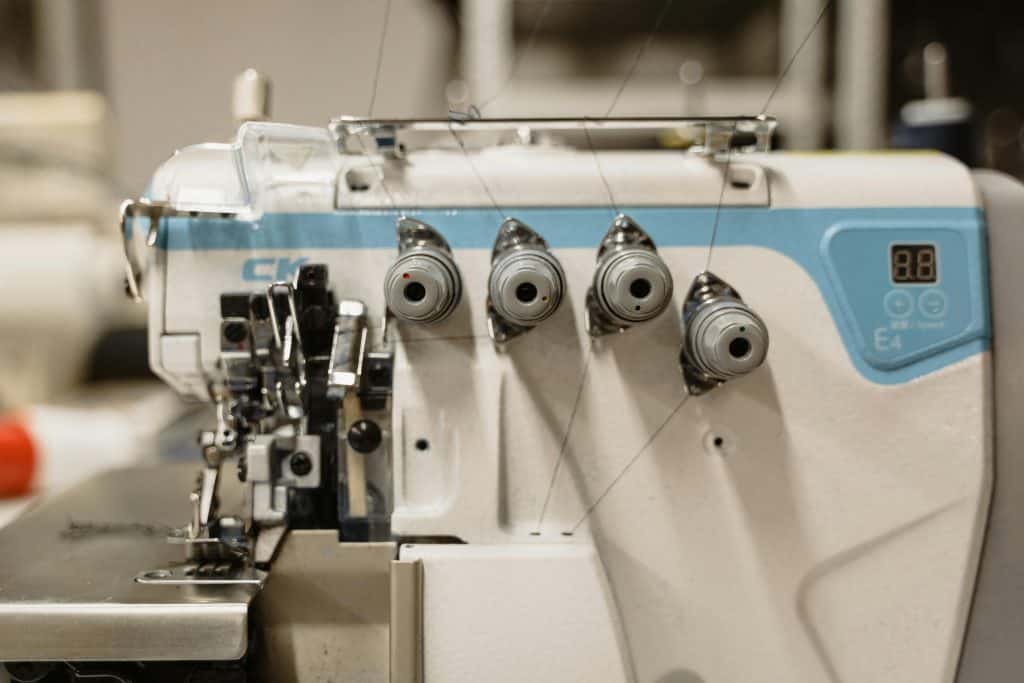
You don’t need a serger to start sewing—but if you find yourself stitching often, especially clothes or home linens, it might become one of your favorite tools.
A serger does a few things at once: it trims the raw edge, wraps it neatly in thread, and finishes the seam with strength and stretch. That’s why it’s especially helpful for knits—t-shirts, leggings, baby clothes. It handles those fabrics with ease, giving you strong, flexible seams that hold up to busy life and lots of washing.
It also saves time. Once I began sewing more regularly—multiples of the same item, gifts, garments for growing children—I came to appreciate how quickly a serger works without sacrificing quality.
But it’s not essential, especially in the beginning. Think of it like a stand mixer in the kitchen. Lovely to have, but not necessary to bake something beautiful. When the time is right and your hands are ready, you’ll know.
3. Pinking Shears
Pinking shears are a great alternative for finishing seams. The zigzag blades help prevent fabric from fraying, and they’re pretty effective at keeping things tidy.
If you don’t want to grab them every time, a simple zigzag stitch on your regular machine along the edge works just as well. It’s an easy trick that helps prevent unraveling during washing.
4. Trade Edge Ruler (24-Inch Clear)
When you’re working with patterns, straight lines matter. A clear acrylic ruler (especially a 24-inch one) is a helpful tool for measuring, marking, and cutting with accuracy.
It’s long enough to handle things like hems, straps, and bias strips, and the transparent material makes it easy to line up your fabric and markings properly. This type of ruler is especially useful when you’re cutting out pattern pieces or double-checking grainlines.
If you’re sewing from printed patterns or working on quilting projects, a clear, sturdy ruler will help you keep things straight and consistent from the start.
5. Seam Ripper
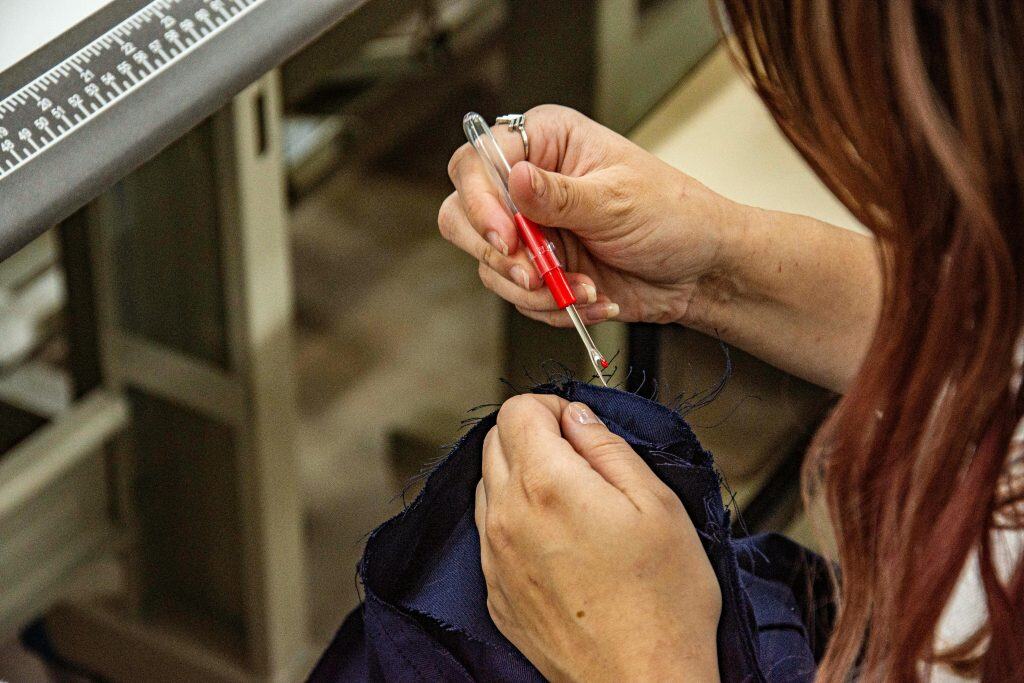
Before you even stitch your first seam, friend – get yourself a seam ripper.
You’re going to need a seam ripper. Probably more than once. It’s the tool that helps you undo stitches without wrecking your fabric when something doesn’t line up right (which happens a lot, especially when you’re learning).
It’s small, cheap, and honestly, kind of a lifesaver. Keep it handy – you’ll be glad you did.
6. Measuring Tape (Flexible & 60 Inches)
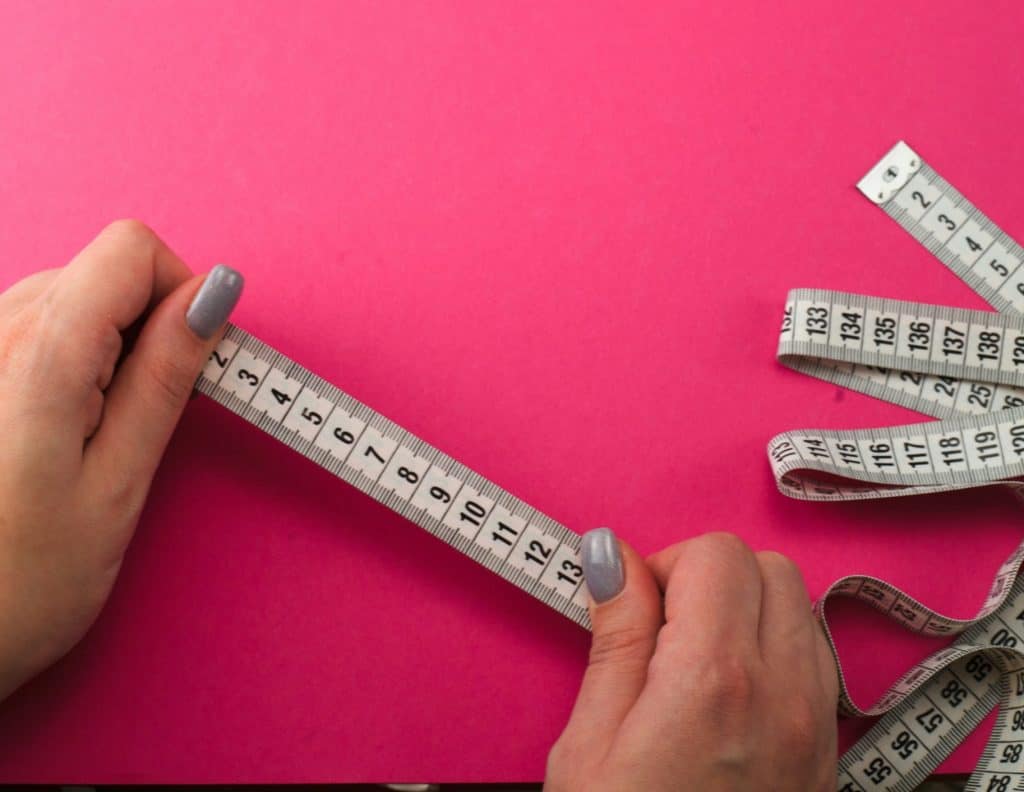
A flexible measuring tape is one of the first tools I reach for, and one of the last I’d ever part with. Unlike a rigid ruler, it curves with the body, wraps around waistlines and arms, and helps you take true, thoughtful measurements for garments that actually fit.
The 60-inch length gives you plenty of room to measure everything from a toddler’s chest to curtain panels. And because it’s soft and easy to store, I often tuck it in my sewing basket or loop it over my neck while I work.
It’s simple, but essential—like a wooden spoon in the kitchen. Always there, always useful.
7. Iron
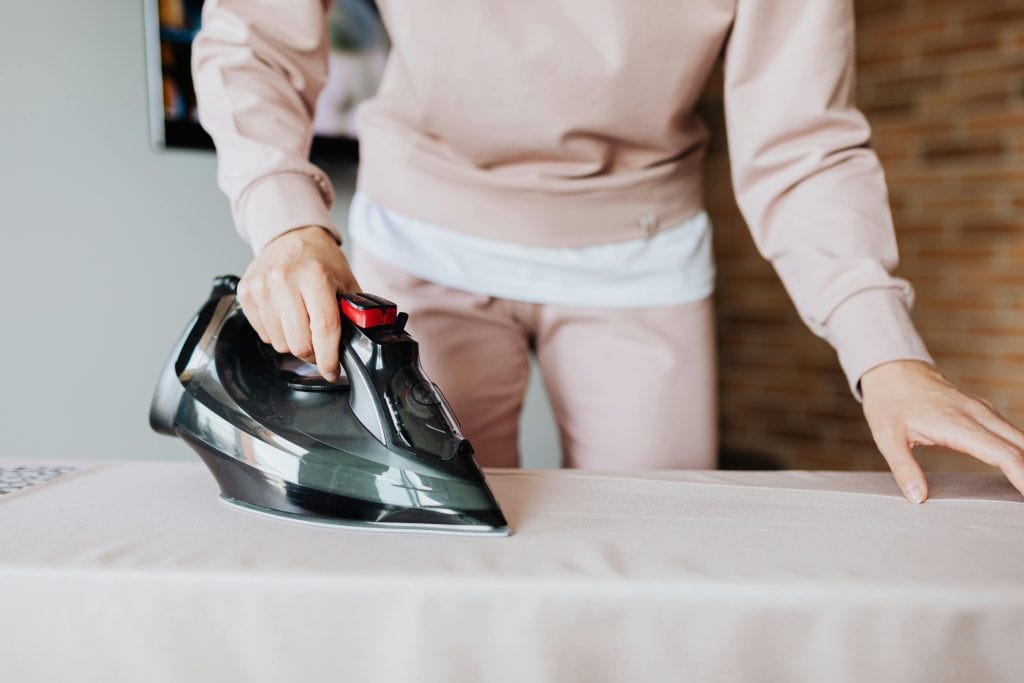
If there’s one tool that quietly transforms your sewing, it’s a simple home iron.
Pressing your seams as you sew makes a big difference – things line up better, corners sit flatter, and the whole project just looks more put-together. It’s one of those simple steps that’s easy to skip, but really worth the extra minute.
No need for anything fancy. A regular home iron does the job just fine. Some people get into specialty irons later on, but if you’re just starting out, use what you’ve got. An iron and a bit of steam can clean up a wrinkly fabric or help shape seams exactly how you want them.
8. Sharp Fabric Scissors
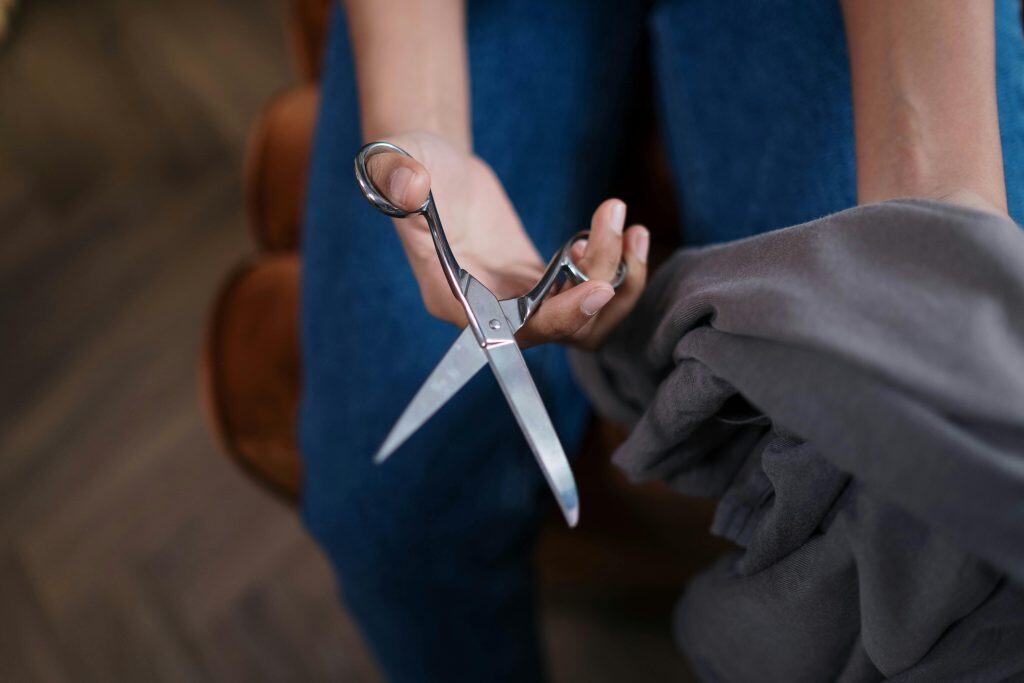
There’s nothing like the clean, satisfying glide of sharp fabric scissors through cotton or canvas. It’s a small joy that never gets old.
These aren’t your everyday kitchen scissors. These are your sacred sewing scissors – the ones that only touch fabric and pattern paper, never plastic packaging or stray strings. Mine live in a drawer by themselves, safe from little hands and accidental dulling.
Good scissors help you cut true to your pattern, especially when you’re working with curves or crisp lines. When the fabric behaves under your blade, everything else flows more easily. Keep them sharp, treat them kindly, and they’ll serve your sewing table for years to come.
9. Thread Snips
While big scissors take care of the heavy cutting, thread snips handle the delicate details. Always keep a pair of thread snips nearby when sewing. They’re small, lightweight, and perfect for trimming off those little threads that pop up at the end of a seam.
You could use regular scissors, sure – but snips are quicker and just easier to grab and go. It’s one of those tools that doesn’t seem like a big deal until you have them… and then you wonder how you ever managed without.
10. Self-Healing Cutting Mat
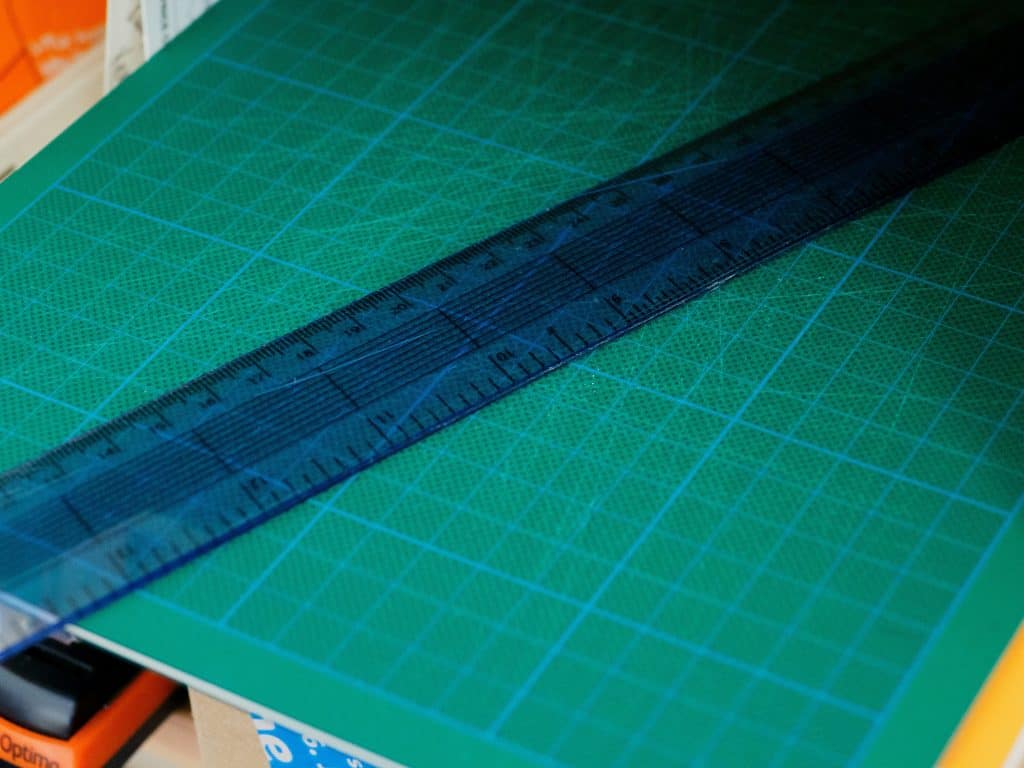
This one often gets overlooked – but trust me, a good cutting mat makes a world of difference when it comes to clean, accurate cuts.
If you’re cutting out patterns, trimming long lengths of fabric, or using a rotary cutter (which many of us do for quilting or large projects), a cutting mat gives you a solid, forgiving surface to work on. It protects your table, keeps your blades sharp, and helps you line things up just right.
You can find them easily online or at your local fabric store, and they come in a range of sizes. Even the smaller ones are a blessing when space is tight.
Think of it like a good bread board – solid, dependable, and always ready for the next project.
11. Tailor’s Chalk
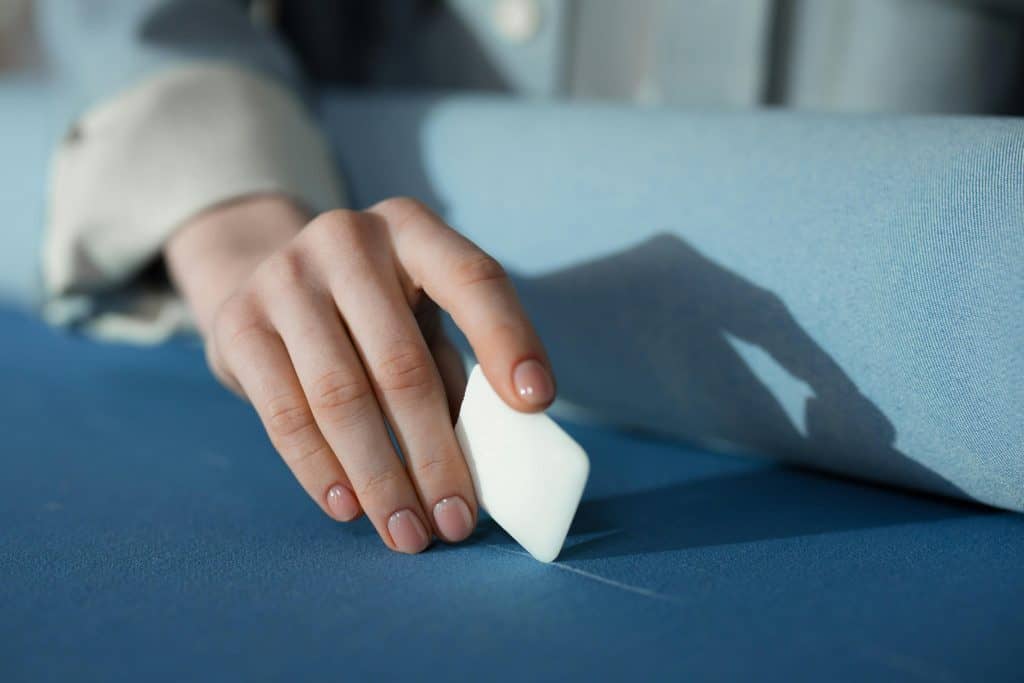
Sometimes sewing feels a little like drawing, doesn’t it? That’s where tailor’s chalk comes in.
Before you cut or fold, use chalk to mark darts, notches, and fold lines. What’s good about it is that it brushes off or washes away, leaving no trace behind once the garment is done. Like a note whispered to the fabric that vanishes after its job is done.
You can find chalk in little triangles or pencils, and it works beautifully on most fabrics. You can tuck it in a tin next to a pin cushion, ready to scribble quiet directions onto cotton or linen before you stitch.
12. Sewing Gauge (or Seam Gauge)
For the small, precise parts of sewing, a seam gauge is super helpful. It’s a small ruler with a sliding marker, great for measuring hems, pleats, folds, and buttonholes.
It helps keep measurements consistent, especially when you’re working on seams or details where even small differences can throw things off. This is especially useful for garment sewing, where accuracy really matters.
It’s a small tool, but it’s one you’ll reach for often – kind of like a good measuring spoon in the kitchen. Simple, but reliable.
13. Pins (and a Magnetic Holder or Pin Poof)
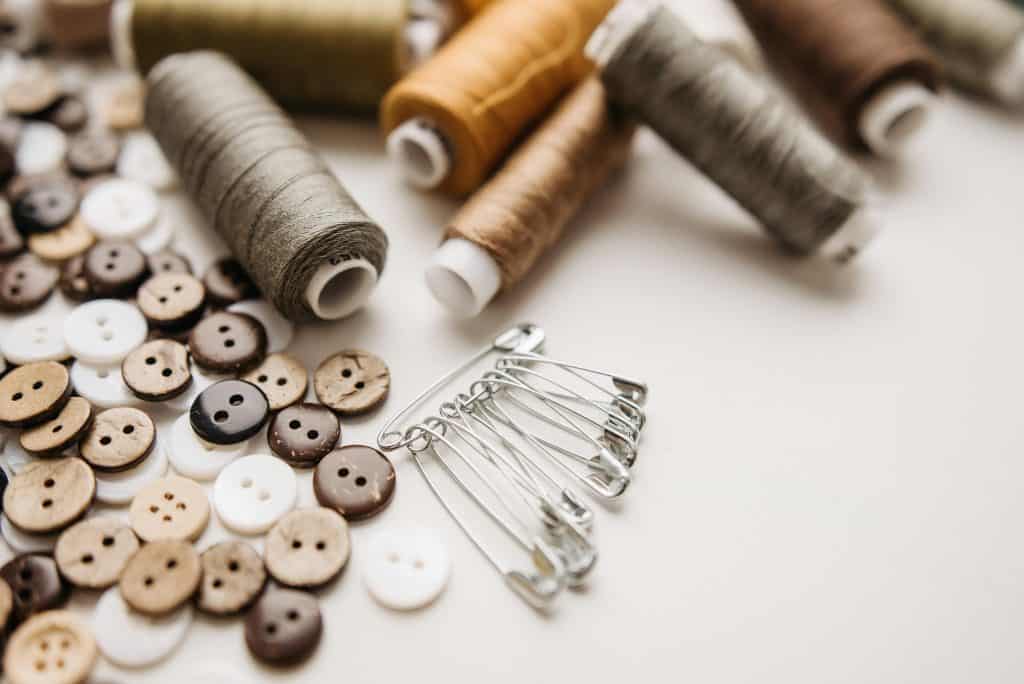
No matter what you’re sewing, a good handful of pins will become your extra set of hands.
Before you cut, before you stitch, you’ll need to hold your fabric steady especially if you’re working with slippery cottons or layers that tend to shift. Look for the ones with glass heads, easy to see and gentle to press over.
But the real life saver is a magnetic pin holder or a sweet little pin poof. With kids running through the kitchen and projects stretched out on the table, I’ve learned the hard way what happens when a dish of pins hits the floor.
A magnetic dish keeps them in one place. A pin cushion keeps them tucked safely at your side. Either way, you’ll save time – and maybe a few tears – just by keeping things tidy.
14. Rotary Cutter
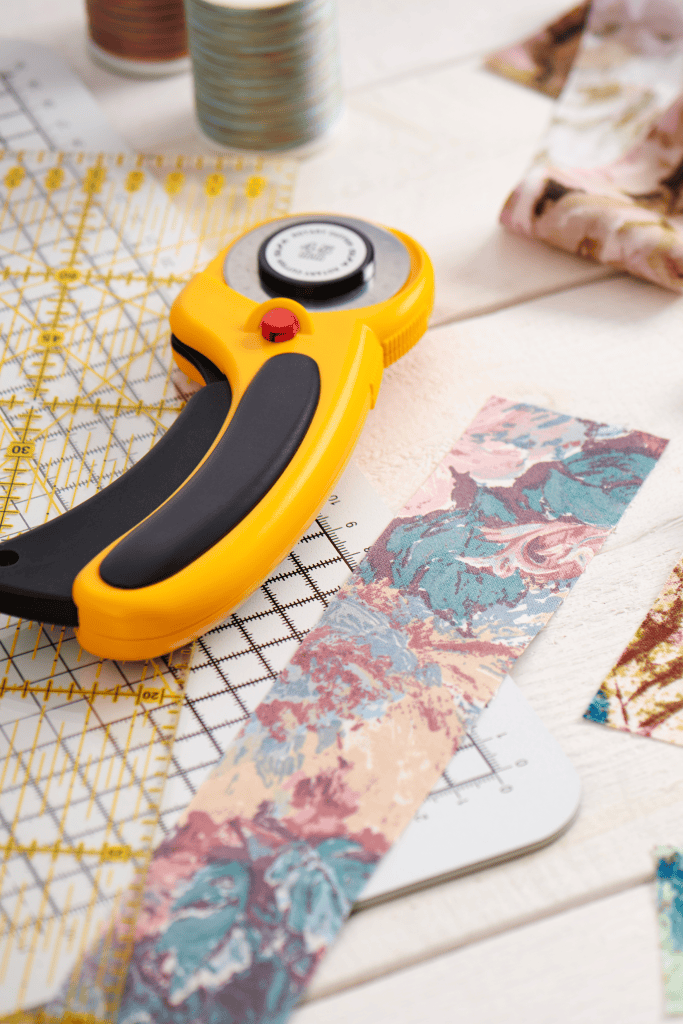
A rotary cutter is one of those tools you don’t realize you need—until you use one. Then you wonder how you ever cut fabric without it.
It’s essential for clean, straight cuts, especially when working with patterns, quilting projects, or long lengths of fabric. Unlike scissors, which can lift or shift fabric as they cut, a rotary cutter glides smoothly and keeps your edges crisp and even.
I reach for mine when I’m cutting multiple layers, trimming down fabric scraps, or working with patterns that call for precision. Paired with a self-healing cutting mat and a clear ruler, it saves time and gives cleaner results.
If you’re planning to sew regularly, this tool is worth the small investment. Once it’s in your toolkit, you’ll wonder how you managed without it.
15. Fabric Clips
Sometimes, pins just don’t do the job – especially when working with thick layers or fabrics that don’t handle pinholes well, like vinyl or oilcloth.
Fabric clips are a great alternative. They hold layers together without damaging the material and are easier to use when sewing bulky projects. They’re also a safer option if you’ve got kids around and want to avoid dropped pins.
Easy to grab and simple to use, clips are a handy addition to your sewing kit when you need a little extra hold.
Stitching at the Pace of Grace
So there you have it – fifteen tools I’d place in your hands if we were sitting together over coffee, our little ones playing underfoot, fabric piled nearby waiting to become something beautiful.
You don’t need them all at once. Gather as you grow. Sew slowly, with grace. Let the learning be part of the joy, not something to rush through. In this season of stitching, may you find a rhythm that suits your home, your hands, and your heart.
Because here in our homes – where sticky fingerprints meet hand-sewn napkins, where late-night seams are pressed under the hum of the iron – we’re not just making things. We’re tending something sacred.
One stitch at a time.

